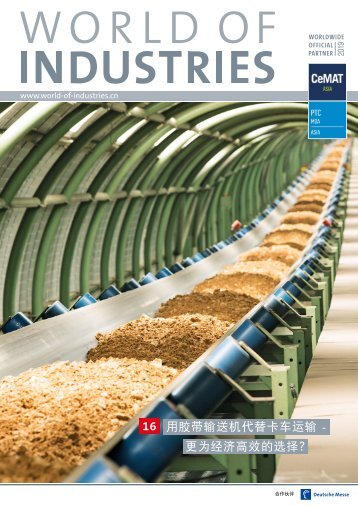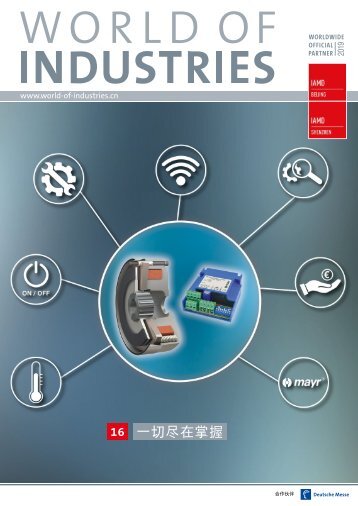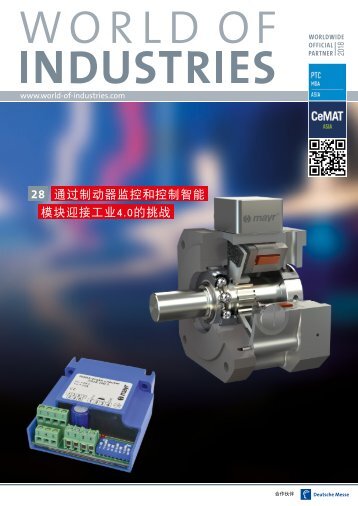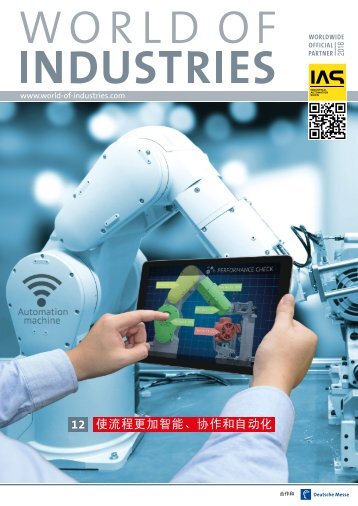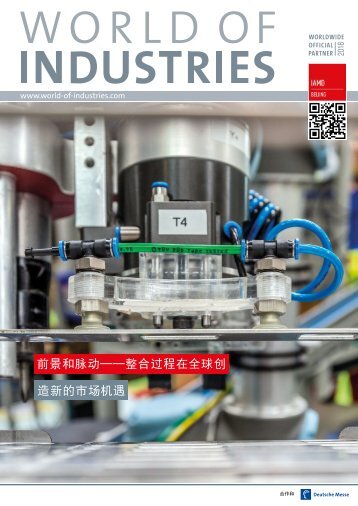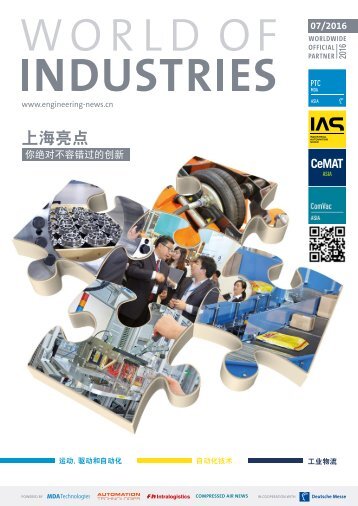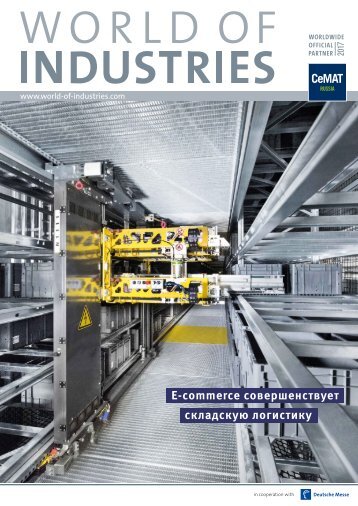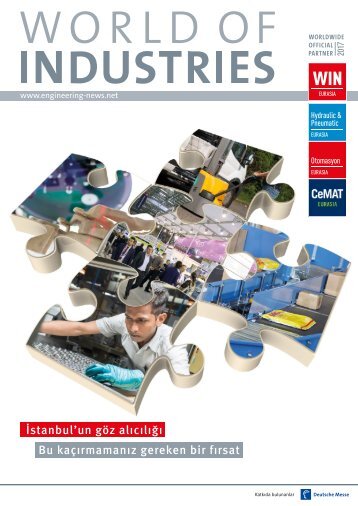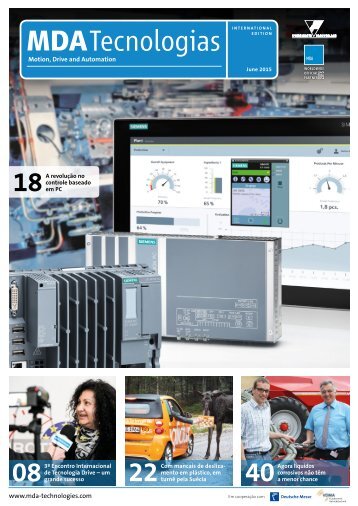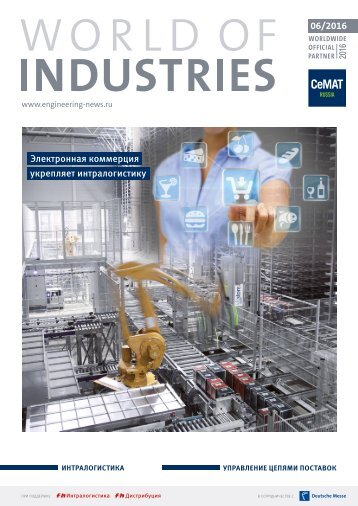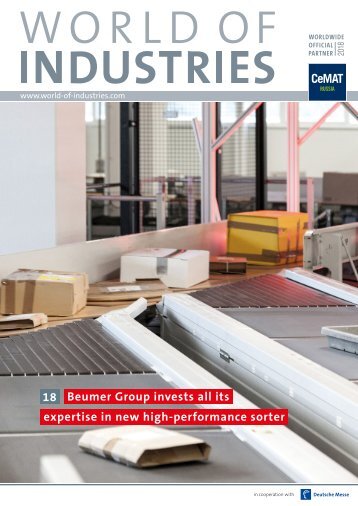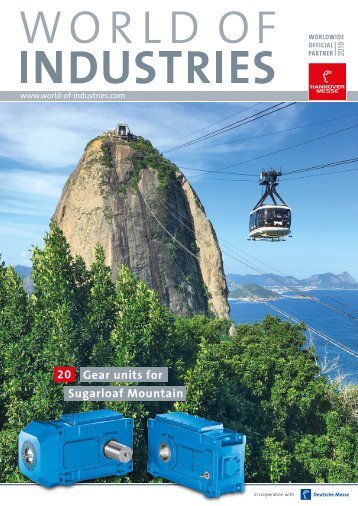
world of industries 1/2017 (EN)
- Text
- Logistics
- Intralogistics
Southeast Asia: one
Southeast Asia: one of the fastest growing regions in the world Southeast Asia has a combined GDP of $ 2.5 trillion and a consumer base of more than 600 million. The region has a very rapidly growing middle class with a continuously increasing purchasing capacity; this along with its global trade deals points to greater benefits for the logistics industry in the region For the most part of the last 2 decades, China has been regarded as the most favoured nation for low-cost manufacturing and out-sourcing. The member nations of the Association of Southeast Asian Nations or simple called “Asean” are becoming an increasingly attractive destination. Southeast Asia is a region of big numbers and big opportunities. This part of the Asian continent has more than 600 million citizens, with Indonesia having the largest share of more than 250 million inhabitants. It’s the world’s 4th most populated country. Indonesia has more than 18,000 islands, over 700 different languages and a strong middle class that is larger than the entire population of Australia. It is also the largest economy in southeast Asia with nearly half of the region’s GDP. Currently it ranks among the top 20 economies in the world and is projected to be the 7th largest by 2030. The country’s economy has grown at a steady rate of 5-6 % over the last 10 years. This obviously not more than India, Russia and China but definitely more stable than BRICS or Organisation for Economic Co-operation and Development (OECD) countries. The biggest contributor to the national GDP is the domestic consumption with more than 50 % share. During the global recession this consumption pattern surely protected the Indonesian economy and way of living. The AEC and free trade region This is the century of Asia, with majority of global growth coming from Asia. In the first decade it was mainly driven by China and to some part by India. Now the Asean region along with India seems to be the next global drivers of growth. Also favoring the Asean and Indonesia is its strategic position at the centre of Pacific trade routes, which will ensure robust growth rates among. As a member of the ASEAN, Indonesia is a part of the ASEAN Free Trade Area (FTA) and the Asian Economic Community (AEC) agreement. This agreement among 10 ASEAN countries allows free movement of goods and services with 0 % tax. For companies to encash the benefits of this 0 % tax facility, the country of origin for all the products must be one of the ASEAN countries. Sushen Doshi, correspondent India for World of Industries WORLD OF INDUSTRIES
GLOBAL BUSINESS The AEC, implemented in 2015, proposes to strengthen the economic integration of Southeast Asia. With AEC now into action, it facilitates free flow of goods, services, investment, skilled labour and technology which will ultimately bring the people of the region closer. The integration of ASEAN into an AEC is based on 4 economic pillars: n Single market: the region as a whole aims to become a single market and a production base to produce and commercialize goods n Competitive economic region: it emphasizes on the competitiveness of its production and capacity for export, as well as the free and fair competition inside of its territories n Equitable economic development: to receive the benefits of the AEC, the people and businesses of ASEAN must be engaged into the integration process of the AEC n Integration into the global economy: Due to various ASEAN+1’ free trade agreements with the China, Japan, South Korea, Australia and India, Indonesia as a member of Asean is positioned in the middle of global supply chain, developing strong trade connections with the major economies and generating larger business opportunities. The AEC agreement also benefits the European companies operating, producing and shipping goods within the region with intra- ASEAN tariff reduction. There will be some areas where the AEC gives other ASEAN countries better market access than European, American or Chinese firms have, but these are likely to be fairly limited. The AEC agenda promotes regulatory reforms, improves trade facilitation and financial development in the region. Through ASE- AN, Indonesia, one of the largest players in the region has obviously so much to gain and so much to offer. Growing middle class Strengths of the Indonesian market include n Growing middle class n High proportion of working age people n Abundance of natural resources n Political stability following transition to democracy in 1998 n Strong domestic consumption n Largest economy in Southeast Asia Indonesia’s economic growth is driven by a strong middle class of 75 million – more than the entire population of Canada. This has been projected to double by 2025. With increasing middle class the demand for products and services in modern retail, consumer goods, healthcare, professional education and vocational training, information and communications technology (ICT), transport, logistics and warehousing, construction and manufacturing is increasing. With 60 % of the population under 30 years of age, Indonesia has a very young, IT savvy and hungry for growth consumer base. International surveys show that Indonesians as consumers are highly receptive to advertising and keen to try new things. The country has around 100 million internet users. Compared to other developing countries, Indonesia seems to be more globally connected. Challenges doing business in Indonesia For doing business in Indonesia, companies must be prepared to encounter challenges in complex bureaucracy, unpredictable legal and regulatory environment, lack of transparency, high logistics costs as compared to the state of infrastructure. It is the 101st easiest place to do business in the world according to the World Bank. Indonesia offers a lot of opportunities for global companies in a wide range of sectors. However, companies looking for a “quick win” would be advised to look elsewhere. It can take time to develop the necessary relationships before any financial returns materialise. Companies should recognise this and plan their business entry strategy accordingly. Photographs: Fotolia WORLD OF INDUSTRIES 11
- Page 1 and 2: www.engineering-news.net Making the
- Page 3 and 4: TABLE OF CONTENT 05 EDITORIAL 06 WO
- Page 5 and 6: WELCOME Dear Readers, Indonesia, th
- Page 7 and 8: 1 Still establishes direct distribu
- Page 9: GLOBAL BUSINESS changing purchasing
- Page 13 and 14: Product News Safely reaching the ri
- Page 15 and 16: High logistics costs Now is the rig
- Page 17 and 18: GLOBAL BUSINESS society. Digitizati
- Page 19 and 20: INDUSTRIAL TRUCKS companies should
- Page 21 and 22: WAREHOUSING Amul is much more than
- Page 23 and 24: WAREHOUSING David Eisenhut, Directo
- Page 25 and 26: CRANES AND HOISTS newly developed e
- Page 27 and 28: CRANES & HOISTS Image: All function
Inappropriate
Loading...
Mail this publication
Loading...
Embed
Loading...
